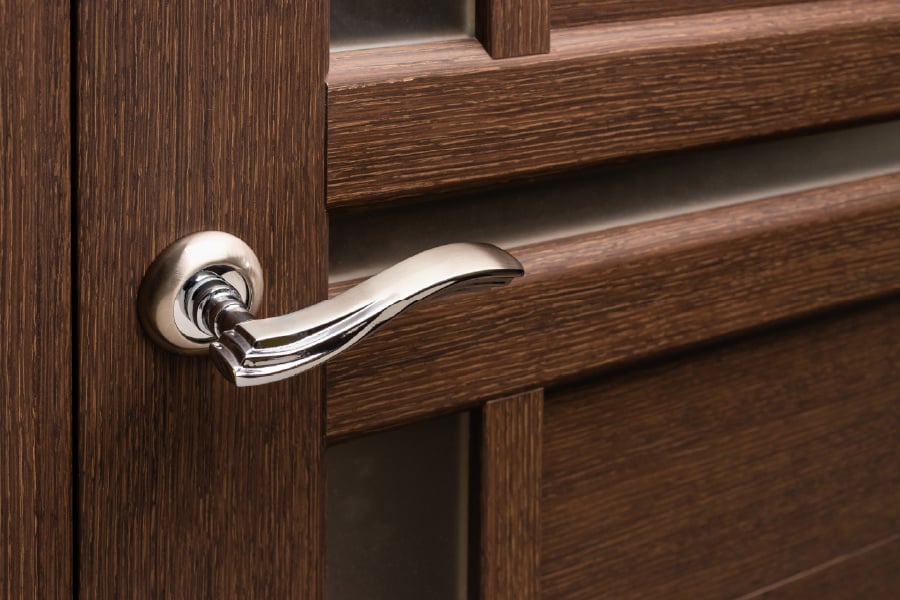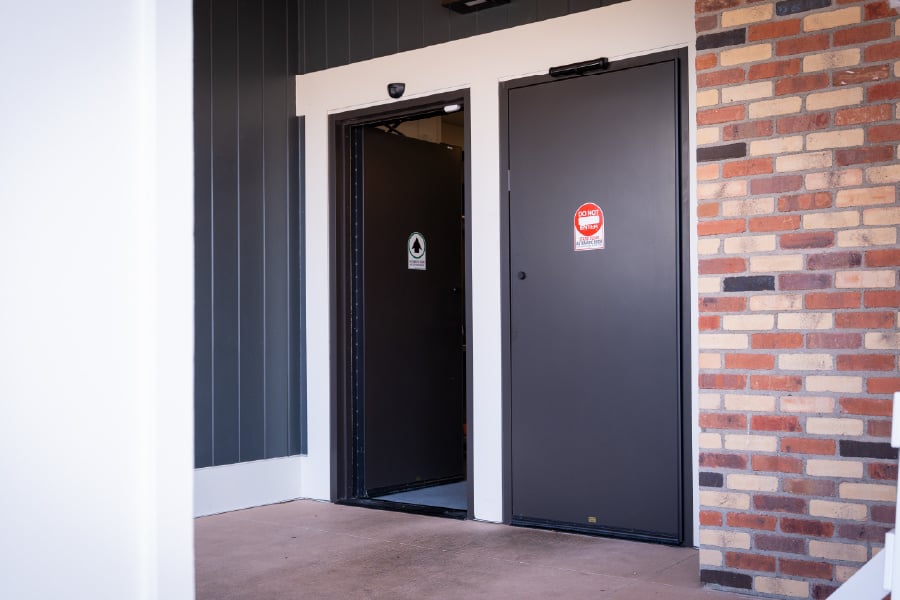
When a wood door starts to change color, it can catch people off guard.
What was once a rich, even finish might look faded or darker in certain areas. Lighter tones develop golden or reddish hues. Sometimes it happens in patches—a sunlit corner of a conference room, a high-humidity hallway near a kitchen, a door near a window that now looks completely different from the others on the same floor.
Here’s the thing: in most cases, it’s not a defect. It’s nature at work.
Wood is an organic material. And like anything natural, it responds to its environment. That includes sunlight, air, humidity, and time. Understanding how and why wood doors age can help you plan smarter, select better materials, and avoid surprises down the road.

Environmental Exposure Changes Everything
No finish stays untouched forever. Even the best wood stains and protective coatings can’t stop the subtle chemical and physical changes that happen when wood is exposed to the elements.
- UV Exposure causes wood to fade or darken depending on the species and finish. Direct sunlight is one of the biggest culprits in color shift.
- Oxidation occurs when wood reacts with oxygen in the air, slowly altering its tone over time—especially in lighter finishes.
- Humidity can cause wood to expand or contract. That movement affects both the surface finish and the underlying color, especially in buildings without tight climate control.
- Wood Species react differently. Darker woods may lighten. Lighter woods may deepen in tone or develop a warmer cast. No two materials age exactly the same way.
These changes are natural, and in many cases, expected. But if uniform appearance is a priority—or if the space will experience heavy environmental fluctuation—there are ways to plan accordingly.

The Alternative: Plastic Laminate
In spaces where long-term color stability is critical, plastic laminate doors offer a practical solution. They aren’t affected by oxidation or UV exposure the way real wood is. And they handle humidity and cleaning chemicals with less risk of warping, swelling, or finish failure.
Plastic laminate is:
- Highly moisture-resistant
- Durable under regular cleaning and wear
- Designed to maintain a consistent appearance for years
This doesn’t mean laminate is better than wood. It means it’s different. The right choice depends on the space, the look you want, and how much aging you’re willing to allow over time.
S.A. Morman Helps You Choose for the Long Term
Our team regularly helps clients navigate these material decisions. We look at how your spaces will be used, what environmental factors are at play, and how much visual consistency matters over time.
If a richly grained wood finish is the right choice, we’ll help you understand how it may evolve. And if a stable, low-maintenance surface is a better fit, we’ll guide you to options that deliver that performance without sacrificing appearance. This isn’t just about style. It’s about knowing what to expect—and designing around it from day one.

The Bottom Line
Wood doors tell a story over time. They respond to their environment. And while those changes are often subtle, they’re rarely accidental. Knowing how finish aging works lets you make smarter, more confident choices—ones that align with your expectations, your budget, and the performance you need from your space.
Let’s talk about the environments you’re designing for. We’ll help you choose materials that age well—or stay exactly the same.

